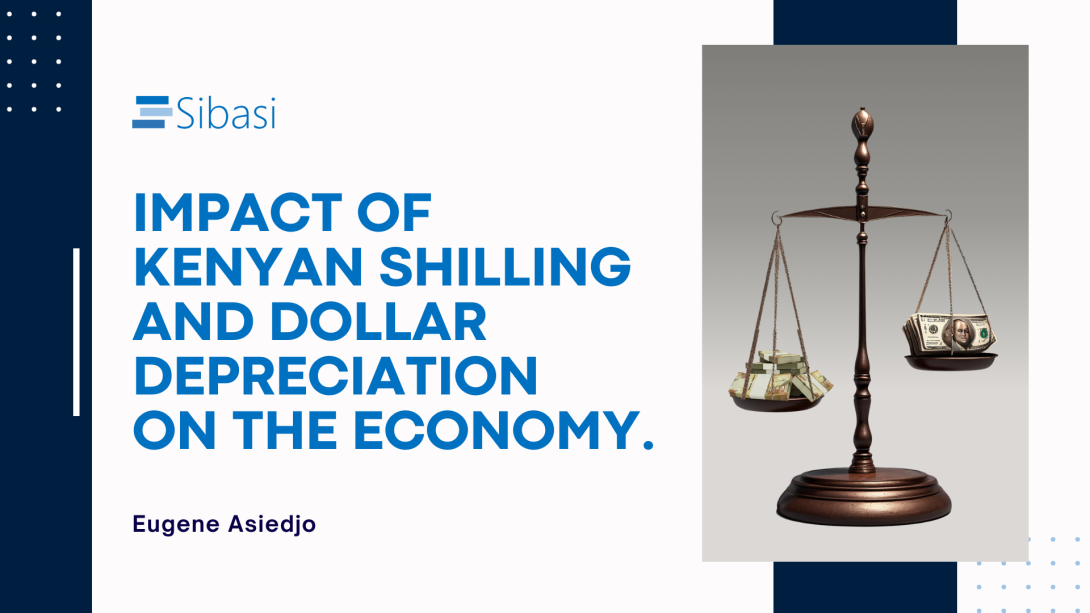
Currency depreciation is a complex economic phenomenon with wide-ranging effects on both domestic and international economies. In Kenya, the depreciation of the Kenya Shilling (KES) against the US Dollar (USD) has been a topic of concern for policymakers, businesses, and the general public. Understanding the implications of this depreciation is crucial for making informed decisions and mitigating its adverse effects.
Factors Driving Depreciation: Several factors contribute to the depreciation of a currency, including economic fundamentals, market speculation, political instability, and external shocks. In the case of Kenya, some key factors driving the depreciation of the KES against the USD include:
- Trade Imbalance: Kenya has experienced a persistent trade imbalance, with imports exceeding exports. This leads to higher demand for foreign currency (USD) to pay for imports, putting pressure on the KES. A country with high demand for its goods tends to export more than it imports, increasing demand for its currency. A country that imports more than it exports will have less demand for its currency.
- Weak Export Performance: Kenya's export sector has faced challenges, including low global commodity prices and limited value addition. This has resulted in lower export earnings, further exacerbating the trade imbalance.
- Capital Flight: Political uncertainty and a lack of confidence in the domestic economy can lead to capital flight, where investors move their funds out of the country. This reduces demand for the KES, contributing to depreciation.
- Inflation Differentials: Higher inflation rates in Kenya compared to its trading partners can erode the value of the KES, making imports more expensive and further widening the trade imbalance.
Every action has a reaction: The depreciation of the KES against the USD has several implications for the Kenyan economy, including:
- Inflationary Pressure: Depreciation can lead to higher import prices, particularly for essential goods such as fuel and food. This can contribute to inflationary pressures, reducing the purchasing power of consumers.
- Increased Cost of Borrowing: Depreciation can lead to higher interest rates, as the Central Bank may raise rates to stabilize the currency. This can increase the cost of borrowing for businesses and individuals, slowing down economic activity.
- Reduced Foreign Investment: Depreciation can make investing in Kenya less attractive for foreign investors, as their returns may be eroded when repatriated to their home currencies.
- Debt Servicing Challenges: Kenya has significant external debt denominated in foreign currencies. Depreciation can increase the cost of servicing this debt, putting pressure on the government's finances.
- Export Competitiveness: While depreciation can make Kenyan exports more competitive in international markets, the benefits may be limited by factors such as low value addition and global demand dynamics.
Policy Responses: To mitigate the effects of currency depreciation, policymakers can consider various measures, including:
- Fiscal and Monetary Policy Coordination: Coordinated fiscal and monetary policies can help stabilize the currency and support economic growth.
- Diversification of Exports: Promoting diversification of exports and value addition can reduce reliance on a few key commodities and improve export competitiveness.
- Strengthening Institutions: Enhancing institutions responsible for managing the economy, such as the Central Bank, can improve the country's ability to respond to currency depreciation.
- Investment in Infrastructure: Improving infrastructure can reduce the cost of doing business, attract foreign investment, and enhance export competitiveness.
The depreciation of the Kenya Shilling against the US Dollar has significant implications for the economy, affecting inflation, borrowing costs, investment, and debt servicing. Understanding the factors driving depreciation and implementing appropriate policy responses are essential for managing its effects and promoting sustainable economic growth.







